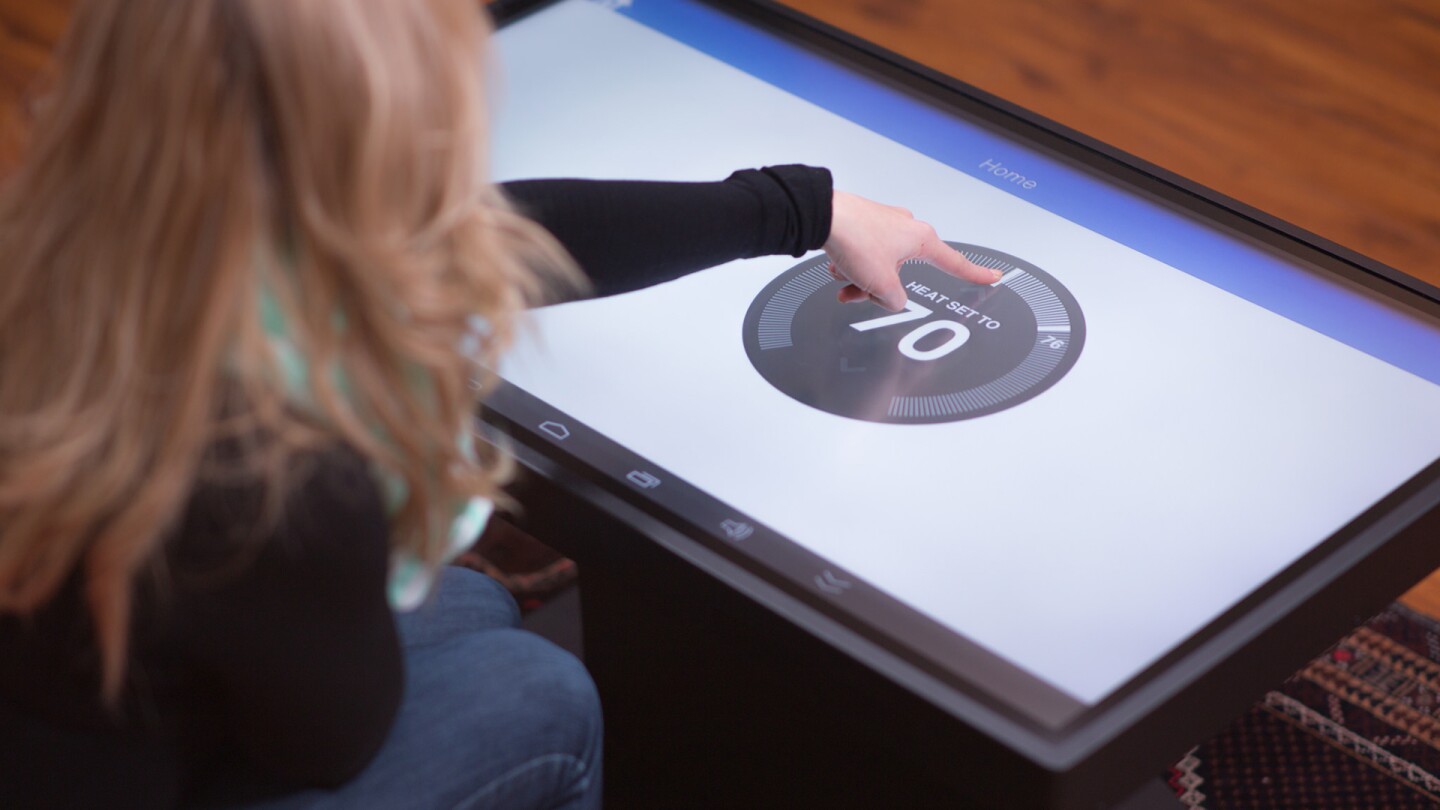We’ve seen a number of smart tables from Ideum before, but the Duet brings something a little new, integrating both Windows 8 and Android computers into a single unit. The company has designed it to be easy to switch between the two operating systems, and the hardware itself is a rugged, multitouch affair.
The Duet is available in 42- and 46-inch variants, both of which sport 1,920 x 1,080 resolution. There’s no 4K option like we saw on the refreshed 55-inch Platform and Pro models last year, but the panel is chemically strengthened, features an anti-glare coating and can detect up to 60 simultaneous touch points when using Windows, and up to 12 when running Android.
The table is built from a combination of aircraft-grade aluminum and cold-rolled steel, and is designed and constructed in the US. The display has only a small bezel around its edges and features palm rejection tech. There's IP54 water resistance on the 46-inch model, and the table top itself is just 2.4 inches (64 mm) thick.

The Duet’s biggest draw is its dual operating systems, which can be switched between via both software and hardware buttons. The smart table actually contains two independent computer systems that run simultaneously – one for each of the platforms.
On the Android side of things there’s a 2.0-GHz Rockchip RK3288, coupled with 2 GB RAM and 16 GB on-board storage, expandable up to 32 GB. You won’t find the latest version of Android here, with the table instead running version 4.4 KitKat.
Things are a little more complicated on the Windows 8 side, with internal components varying between the two sizes of table.
The smaller, 42-inch variant runs on a 3.2 GHz Intel Core i5-4570R processor with integrated Iris Pro Graphics 5200, 8GB RAM and 256 GB SSD storage. The 46-inch model offers significantly more power, with a 3.5 GHz Intel Core i7-4710HQ chip, dedicated Nvidia GeForce GTX 760 graphics card, 16 GB memory and a more expansive 512 GB SSD storage solution.

In addition to the two separate systems, there’s an Intel Edison mini-computer on board, programmed to facilitate fast switching between the two operating systems. According to Ideum, moving from one platform to the other takes around two seconds.
The company believes that the Duet’s versatile nature and durable construction makes it well suited to public spaces such as museums, schools, universities, as well as in retail and hospitality settings. That said, Ideum also envisages the Duet as the perfect hub in the home, tying in with existing smart home products by utilizing its Wi-Fi and Bluetooth connectivity and existing suite of Android apps.
The Duet multitouch coffee table starts shipping next month with prices starting at US$7,950.
Check out the video below for a look at the Duet.
Source: Ideum











